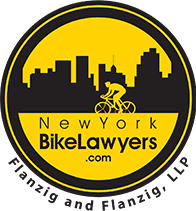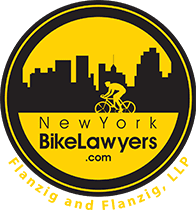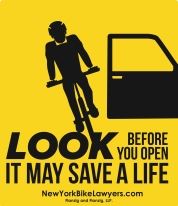Below is an article published by the West Coast Lawyer, Bob Mionske, a well known cycling lawyer, advocate and former Olympian Cyclists.
AVOID THE DOOR ZONE
By Bob Mionske
One of the most common types of car-bike collisions occurs when a stopped motorist suddenly opens a door into the path of an approaching rider. Each year hundreds of cyclists are injured or killed in such crashes. The best way to prevent this is to avoid pedaling in the “door zone”—the 3- to 5-foot area next to a parked car. The problem: Traffic engineers typically place
bike lanes as far to the right as possible, which often puts cyclists entirely within the door zone. If you ride on streets with parallel parking, consider this your open-door policy.
Be Predictable
On roads with plenty of empty parking spaces, it’s tempting to duck in and hug the curb along those vacant spots. But weaving around vehicles can confuse motorists and make you harder to see. Instead, pick a safe line and hold it.
Anticipate
If you choose to ride within the door zone, watch for occupants in parked vehicles and be prepared to come to a quick stop without swerving.
Ditch the Bike Lane
Some police officers mistakenly believe the law requires cyclists to ride as close to the right as possible. In reality, it dictates that cyclists do so only to the extent that it’s safe. You may need to ride in the traffic lane to stay out of the door zone. To reduce your risk of getting a ticket, take only as much of the lane as you need.
Make a Change
A federal study found that sharrows (see illustration, below) encourage motorists to give cyclists space and discourage riders from pedaling in the door zone. Work with local advocates to get them installed on streets where unsafe conditions exist.
ZONING RULES
Sharrows (or “shared arrows,” right) remind motorists that cyclists are entitled to take that part of the road. . Dooring is against the law in many states—including New York and California. If you get hit, call police and file a claim with the driver’s insurance company.


